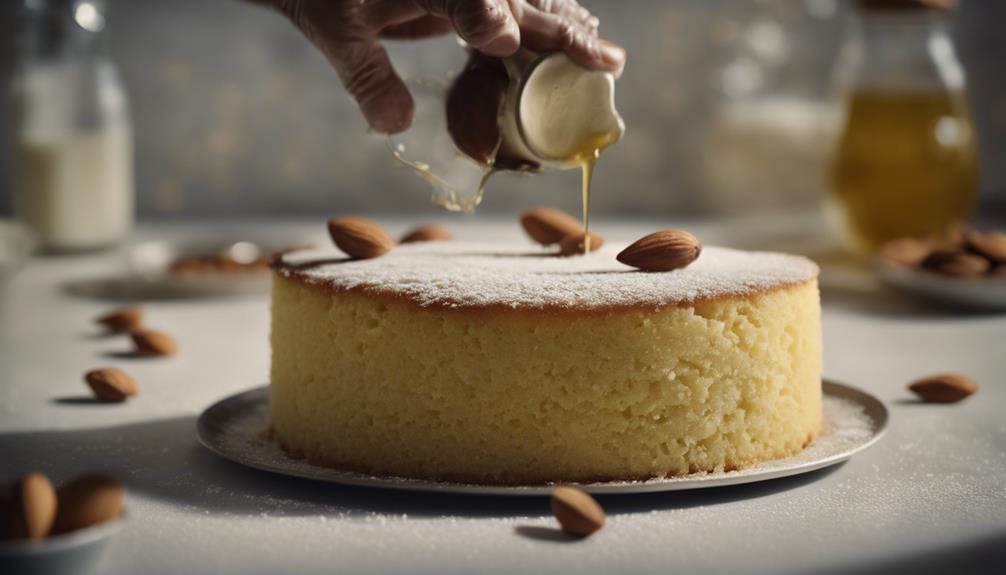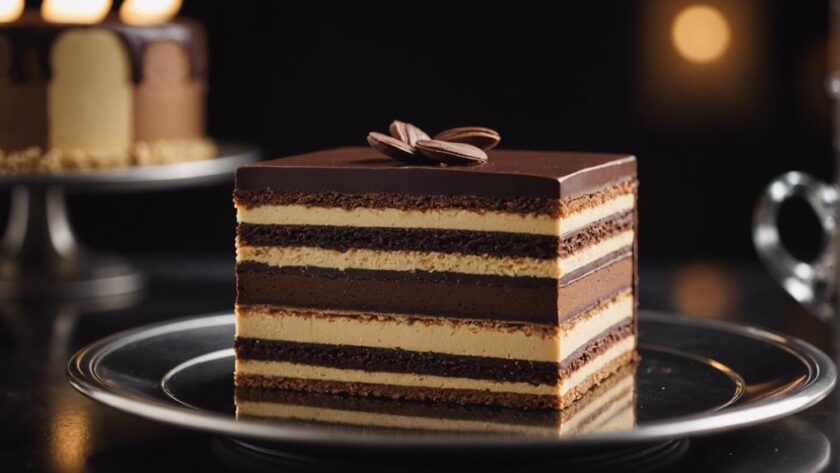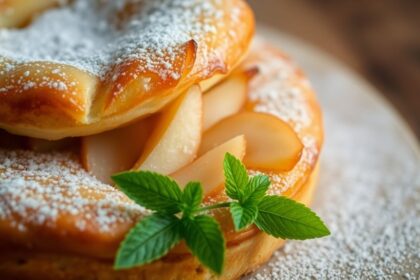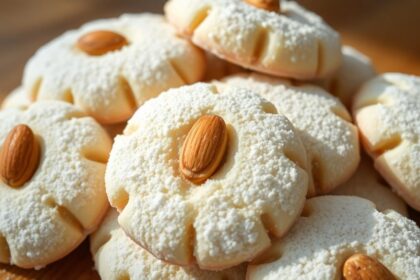Explore the layers of an Opera Cake – a heavenly French dessert marrying almond sponge, coffee buttercream, and chocolate ganache. Let each bite transport you to a world of decadent flavors. Embrace the delicate balance of textures and tastes in this exquisite pastry creation. Uncover the secrets behind its rich history and discover the art of assembling and decorating this luxurious cake for a truly indulgent treat.
History of Opera Cake
Created in 1955 by French pastry chef Cyriaque Gavillon, the Opera Cake, also known as Gâteau Opéra, has a rich history worth exploring. This exquisite dessert is said to pay homage to the Paris Opera House, possibly due to its elegant six-layer structure resembling the grandeur of the opera.
The Opera Cake features layers of delicate almond sponge cake soaked in coffee syrup, generously stacked with smooth coffee French buttercream, and topped with a decadent layer of chocolate ganache. The harmonious flavor profile of this dessert comes from the blend of almond, coffee, and chocolate, creating a symphony of tastes in every bite.
Cyriaque Gavillon's creation quickly gained fame for its luxurious taste and intricate layers, becoming a classic in French pastry history. The Gâteau Opéra continues to be a beloved treat for those seeking a sophisticated and indulgent dessert experience.
Ingredients and Substitutions
To craft a delectable Opera Cake, you must carefully select the right ingredients and consider potential substitutions for a successful baking experience. The delicate sponge layers of the Opera Cake require almond flour, giving them a light and nutty flavor.
When it comes to sweetening the layers, you have the option of using either granulated sugar for a standard sweetness level or super fine sugar for a smoother texture.
For enhancing the taste of the cake, vanilla extract is a popular choice, providing a rich and aromatic flavor. If you prefer a more intense taste, vanilla paste can be used, or artificial flavoring can be a substitute.
When it comes to the eggs, using large eggs at room temperature is essential for achieving the right consistency in the sponge layers.
Lastly, the butter used in the Opera Cake recipe can be either unsalted or salted, depending on your personal preference for the level of saltiness in the dessert.
Make sure to follow these guidelines to guarantee your Opera Cake turns out perfectly delicious.
Baking the Almond Sponge

When baking the almond sponge for an Opera Cake, maintain precision in both time and temperature for the best flavor and texture.
The almond sponge is a vital element that contributes to the overall deliciousness of the Opera Cake. Made with almond flour and eggs, this delicate layer is baked in thin layers to create the signature multi-layered Opera Cake.
These almond sponge layers are then soaked in coffee syrup, enhancing the flavor profile of the cake.
To achieve the perfect balance of flavors and textures in your Opera Cake, make sure that you follow the baking instructions meticulously.
Keep a close eye on the oven temperature to avoid overbaking, which could result in a dry and tough sponge. The right baking time is also essential to maintain the light and airy texture of the almond sponge.
Assembling the Layers
Maintain precision in layering the Opera Cake by carefully stacking the almond sponge cake, coffee syrup-soaked layers, coffee French buttercream, and chocolate ganache in a chilled environment to achieve the desired flavors and textures.
Start by placing a layer of almond sponge cake at the base of your assembly surface. Brush it generously with coffee syrup to infuse it with flavor and moisture.
Next, spread a smooth layer of coffee French buttercream over the sponge, ensuring even coverage. Gently add another layer of sponge cake on top, followed by a generous spread of chocolate ganache.
Repeat this layering process, alternating the components, until you reach the desired height of your Opera Cake. Remember to chill the cake between each layer to allow it to set properly.
This meticulous layering technique is essential for creating the distinctive Opera Cake structure and ensuring a decadent pastry that delights with every bite.
Decorating and Glazing

When it comes to decorating and glazing your Opera Cake, you'll want to master the art of glazing techniques.
Using the right decorating tools can help achieve those artistic finishes that make your cake stand out.
Let's explore the precision and skill required for a flawless and elegant presentation.
Glazing Techniques
For a polished finish on your Opera Cake, glaze the top layer with a smooth, shiny chocolate glaze. To achieve this classic touch, start by preparing a sugar and coffee syrup to brush over the cake layers. Once the layers are stacked with a rich espresso mixture and a creamy layer of buttercream, chill the cake to set.
Next, make the shiny chocolate glaze by melting chocolate with a bit of neutral oil for that glossy look. Place the chilled cake on a wire rack over a baking sheet lined with parchment paper. Slowly pour the glaze over the top, using an offset spatula to spread it evenly. Allow the glaze to set before adding any additional decorations.
You can use a piping bag to create intricate designs with buttercream or dust the top with cocoa powder for an elegant finish. Glazing not only seals in moisture but also adds an extra layer of flavor, making your Opera Cake a decadent delight.
Decorating Tools
To achieve professional-looking decorations and a smooth glaze on your Opera Cake, make sure you have the right tools at your disposal. Decorating tools such as a pastry bag, piping tips, offset spatula, and cake turntable are essential for precision when adding intricate designs, patterns, and decorations to your cake.
The pastry bag and piping tips allow you to create beautiful designs with precision, while the offset spatula helps in spreading fillings and frostings smoothly. A cake turntable is important for rotating the cake while decorating, ensuring even coverage and consistency.
When it comes to glazing, tools like a small offset spatula or bench scraper are essential for achieving a polished finish on your Opera Cake. These tools help in evenly spreading the chocolate glaze over the cake, resulting in a glossy and uniform appearance.
Additionally, using these tools will contribute to a professional-looking presentation that will impress your guests.
Artistic Finishes
Achieving artistic finishes on your Opera Cake involves skillfully decorating with whipped cream or buttercream designs and glazing it with a shiny chocolate layer. When piping designs, precision is essential to create intricate patterns that enhance the cake's appearance.
Whether using whipped cream or buttercream, your creativity can flourish in adding decorative elements like chocolate shavings, cocoa powder dusting, or even edible gold leaf for a touch of luxury.
The final touch of a shiny chocolate layer should be applied with care, ensuring a smooth, glossy finish that captivates the eye. Remember, the key to a stunning Opera Cake lies in the details, so take your time to craft each design with precision and flair.
Let your imagination run wild as you adorn your creation with delightful decorations, turning a simple dessert into a masterpiece that will leave everyone in awe.
Serving and Storing
When serving and storing opera cake, remember it's best enjoyed chilled to maintain its flavors and textures. To guarantee your opera cake stays fresh and delicious, follow these simple tips:
- Refrigerate: Store opera cake in the refrigerator covered to maintain freshness for up to a week.
- Freezing Option: For longer storage, opera cake can be wrapped tightly and frozen for up to a month.
- Thawing Process: Thaw frozen opera cake in the refrigerator overnight before serving to preserve its quality.
- Portion Control: Opera cake is a rich dessert, so it's recommended to enjoy it in small portions to savor the decadent layers.
Conclusion
Now that you've discovered the layers of delight that make up an opera cake, it's time to roll up your sleeves and give it a try.
With a rich history and decadent ingredients, this elegant dessert is sure to impress any crowd.
So grab your apron, preheat your oven, and get ready to create a masterpiece that will have everyone singing your praises.
Cheers to indulging in the sweet symphony of flavors that's an opera cake!





